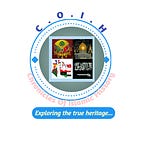PATHS OF PALESTINIAN RESISTANCE: THE PLO AND HAMAS
PALESTINE LIBERATION ORGANIZATION (PLO)
The Palestine Liberation Organization (PLO) is a significant political and representative organization for the Palestinian people. It was established in 1964 and is recognized as the official representative of the Palestinian people internationally. The PLO’s creation was a response to the need for a unified Palestinian voice and leadership in the struggle for Palestinian self-determination and the creation of an independent Palestinian state.
The Arab League established the PLO in 1964, following the Arab Summit in Cairo. The organization aimed to centralize the Palestinian national struggle, coordinate efforts, and represent Palestinians at the international level. The first Palestinian National Council convened in Jerusalem in 1964 and adopted the Palestinian National Covenant, outlining the organization’s objectives and principles. The PNC remains the highest decision-making body of the PLO. The PLO’s primary objective is the liberation of Palestine and the establishment of an independent Palestinian state, with East Jerusalem as its capital.
Initially, armed struggle was a central component of the PLO’s strategy. Over time, this approach evolved to include diplomatic efforts, negotiations, and engagement with the international community. The Covenant, adopted in 1964 and revised in 1968, outlines the organization’s principles, calling for the elimination of Israel and the return of Palestinians to their homes from which they were evicted during the Nakba.
During the late 1960s and 1970s, the PLO, led by its largest faction, Fatah, engaged in guerrilla warfare against Israeli military. In 1988, the PLO officially recognized Israel’s right to exist and accepted United Nations Security Council Resolutions 242 and 338. This move opened the door to negotiations for a peaceful settlement. The PLO entered into peace negotiations with Israel in the 1990s, leading to the Oslo Accords (1993), where the PLO officially recognized Israel’s right to exist and committed to peaceful negotiations.
The Oslo Accords established the Palestinian Authority (PA) as an interim self-governing body in parts of the West Bank and Gaza Strip, with the PLO as its overseeing authority. The PLO serves as the umbrella organization for various Palestinian factions and political parties. Its role in representing Palestinians and pursuing their aspirations for statehood and self-determination on the international stage remains pivotal. However, the PLO faces internal challenges and dynamics, including divisions among Palestinian factions, differing political ideologies, and evolving strategies for the Palestinian cause.
Harakat Al-Muqawama al-Islamiyya (HAMAS)
HAMAS, which stands for Harakat Al-Muqawama al-Islamiyya (Islamic Resistance Movement), was born in the late 1980s exactly 14th dEcember 1987 amidst the Palestinian territories, particularly in the Gaza Strip and West Bank. Its origins and rise can be attributed to a combination of political, social, and ideological factors. Hamas emerged in the context of growing Islamism in the region.
The late 1970s and early 1980s witnessed a rise in Islamic political activism across the Arab world, partly in response to perceived failures of secular nationalist movements amid oppression of the Palestinians. Hamas was heavily influenced by the Muslim Brotherhood, a transnational Islamic organization. Palestinian members of the Muslim Brotherhood in the Gaza Strip and West Bank played a vital role in the establishment of Hamas most famous includes Ahmed Yassin, Hassan Yousef, Abdel Aziz al-Rantisi, etc.
The Palestinian territories faced deteriorating socioeconomic conditions, which contributed to frustration and disillusionment among the population. Poverty, unemployment, and limited access to basic services fueled a sense of despair and desire for change.
During this period, The Palestine Liberation Organization (PLO) was the dominant political entity at the time, but many Palestinians grew disillusioned with its perceived corruption, inefficiency, and failure to achieve their aspirations for statehood and self-determination.
Hamas emerged in the late 1980s with a primary objective of resisting Israeli occupation and striving for the liberation of Palestinian territories. The core tenets of its ideology include advocating armed struggle, self-defense, and resistance against Israeli occupational forces. Hamas aligns itself with Islamist ideals, aiming to establish an Islamic state in Palestinian territories, drawing deeply from Islamic principles and Palestinian nationalism, amalgamating religious and nationalist narratives.
The fertile ground for Hamas’s formation was cultivated during the late 1980s Palestinian uprising against Israeli occupation, fueled by frustrations and grievances. In 1988, Hamas officially adopted its founding charter, delineating its goals, ideology, and strategies, which underscored the importance of resistance, the liberation of Palestine, and the establishment of an Islamic state.
Hamas was formally founded in December 1987, coinciding with the early days of the First Intifada, and its establishment was announced with the release of the charter in 1988. The movement garnered support from a diverse spectrum of Palestinians, including disenfranchised youth, devoted Muslims, and those dissatisfied with existing political factions and the Israeli army’s occupation. The provision of extensive social services further contributed to its popularity. Subsequently, Hamas gained momentum following a brief conflict with the Palestine Liberation Organization (PLO).
